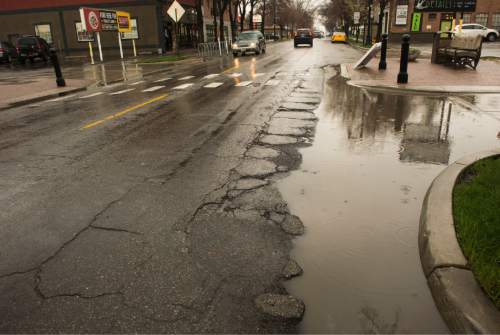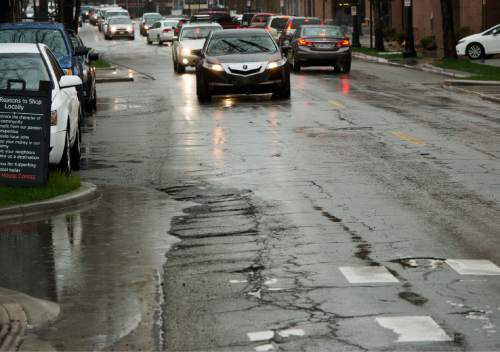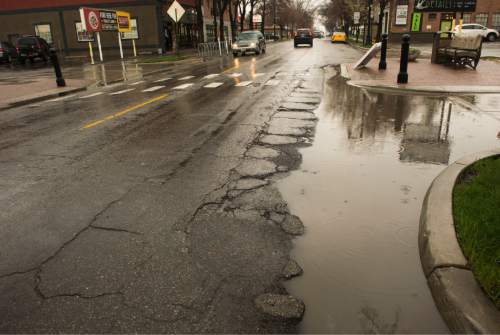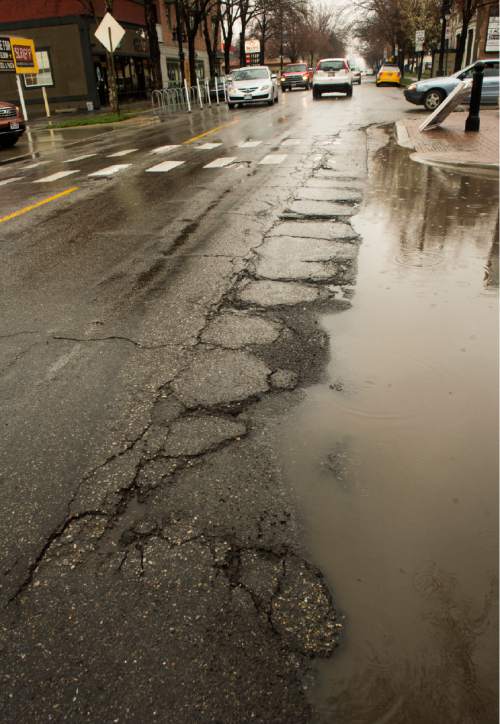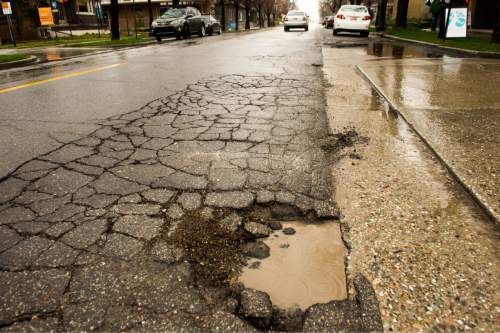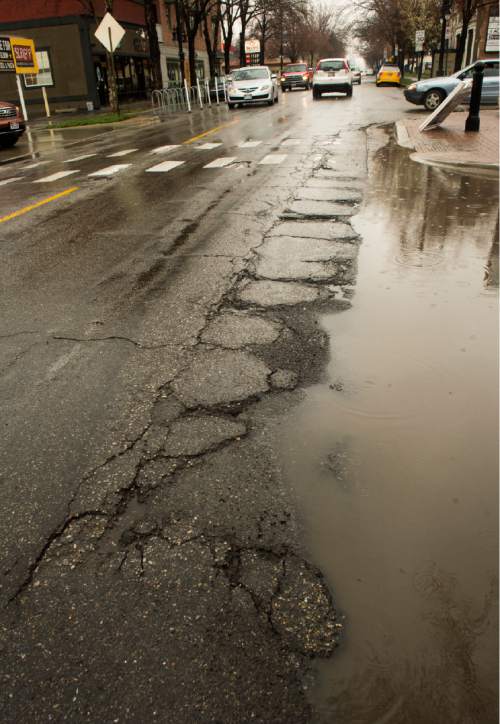This is an archived article that was published on sltrib.com in 2016, and information in the article may be outdated. It is provided only for personal research purposes and may not be reprinted.
It is spring chuckhole season — little doubt about that — but this year Salt Lake City's streets are, generally, in very poor condition.
City street crews scramble to fill cracks with an oily black sealer, but many of the capital city's roadways are crumbling beyond that sort of maintenance.
The exceptions, however, are state roads, such as 300 West, State Street and 700 East, which get regular overlays from the Utah Department of Transportation.
As fiscal year budget season approaches, funding for streets has become a pressing concern for Mayor Jackie Biskupski and the City Council. Unless they find new ways to underwrite critical maintenance, it could be a real budget buster.
Time is the enemy. If a street fails due to neglect, it is significantly more expensive to rebuild than if the road had been repaved before its base eroded.
Councilwoman Lisa Adams noted that she hears more complaints about roadways from her constituents than anything else.
"Our streets are in poor condition," she said. "And the council is serious about doing something timely."
The general deterioration of the city's streets began with the Great Recession in 2008, when then-Mayor Ralph Becker and the City Council had to tighten the budget.
But by the spring of 2013, as the economy showed signs of resurgence, the council raised $8 million in property taxes for street and park maintenance, against Becker's wishes. At least $4.6 million of that was specified for roads.
The mayor vetoed the increase, but the council overrode him.
At the time, then-Councilman Kyle LaMalfa said the city should be overlaying 245 miles of roadway each year. Becker's budget for 2013-14 would have allowed for 5 miles of overlay.
In the 2014-15 budget, however, Becker used the tax increase to give employees raises, even though the council believed its tax hike was earmarked for streets and parks. Politically, the council had little room to oppose the increases after the rank and file hadn't had a raise since 2008.
"The City Council got outplayed by the Becker administration," Councilman Charlie Luke said in a recent interview. "We were very, very clear that when we raised taxes for transportation, that's where the money would go."
Luke praised the streets division for what it has done with limited resources. But, he warned, budget increases for streets are now critical.
"We've stretched them out as far as we can," he said. "We'll see catastrophic failures requiring full-blown street replacements."
Sustainable funding for street maintenance is one of the council's priorities for the upcoming fiscal year. The others are housing/homelessness and economic development.
"We'll see whether the mayor and City Council have the political will to fund street maintenance, knowing it will cut into other projects," Luke said. "Hopefully we'll be looking for different financing tools so we can make progress."
He did not identify any new financing mechanisms.
Biskupski agreed that Salt Lake City streets are "absolutely in decline."
She added that Becker should have used the 2013 tax hike to maintain roadways. "That was not OK," she said.
The mayor said her budget is not fully prepared, but transportation will be a key element. She will deliver it to the council the first week of May.
Biskupski, too, hinted at new approaches to pay for street maintenance, but she did not specify how.
Although Salt Lake City hosts commuters and visitors, its property owners bear much of the burden of maintenance.



